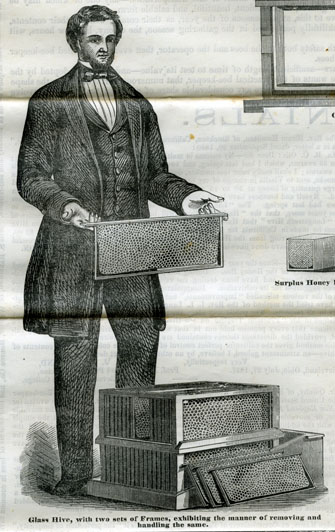Background on D.H. Coggeshall

Advertisement for L.L. Langstroth moveable comb hive
David Hoyt Coggeshall, Jr., was born on Dec. 1, 1847, the son of D.H. and Lydia Coggeshall who had emigrated from their native Stamford, Conn., to the small Finger Lakes town of Groton.
From the little that can discerned about him, Coggeshall began raising bees seriously while still in his youth, and apparently became interested in Italian bees within a decade of their introduction to the United States in 1859. Mild-tempered and highly productive, the Italian bees rapidly supplanted the black bees that had been the main source of honey in the country, and Coggeshall established himself as an energetic producer of honey and extracted honey and he sold and sometimes rented bees as well.
Shortly after the turn of the twentieth century, Coggeshall and another beekeeper (identified only as Alexander) apparently became involved in an effort to convert nectar artificially into honey, although their efforts proved disastrous. In 1915, they were singled out in the journal Western Bee Keeper as having
"ruined the New York market for extracted honey with their green, thin product, and it took us four years to recover it. You would not eat, neither could you sell, for any domestic purposes, the thin, flavorless product of their apiaries -- but for sweetening plugtobacco and show blacking it answers nicely."
Coggeshall died on Dec, 15, 1912, leaving behind his wife Clarinda.

